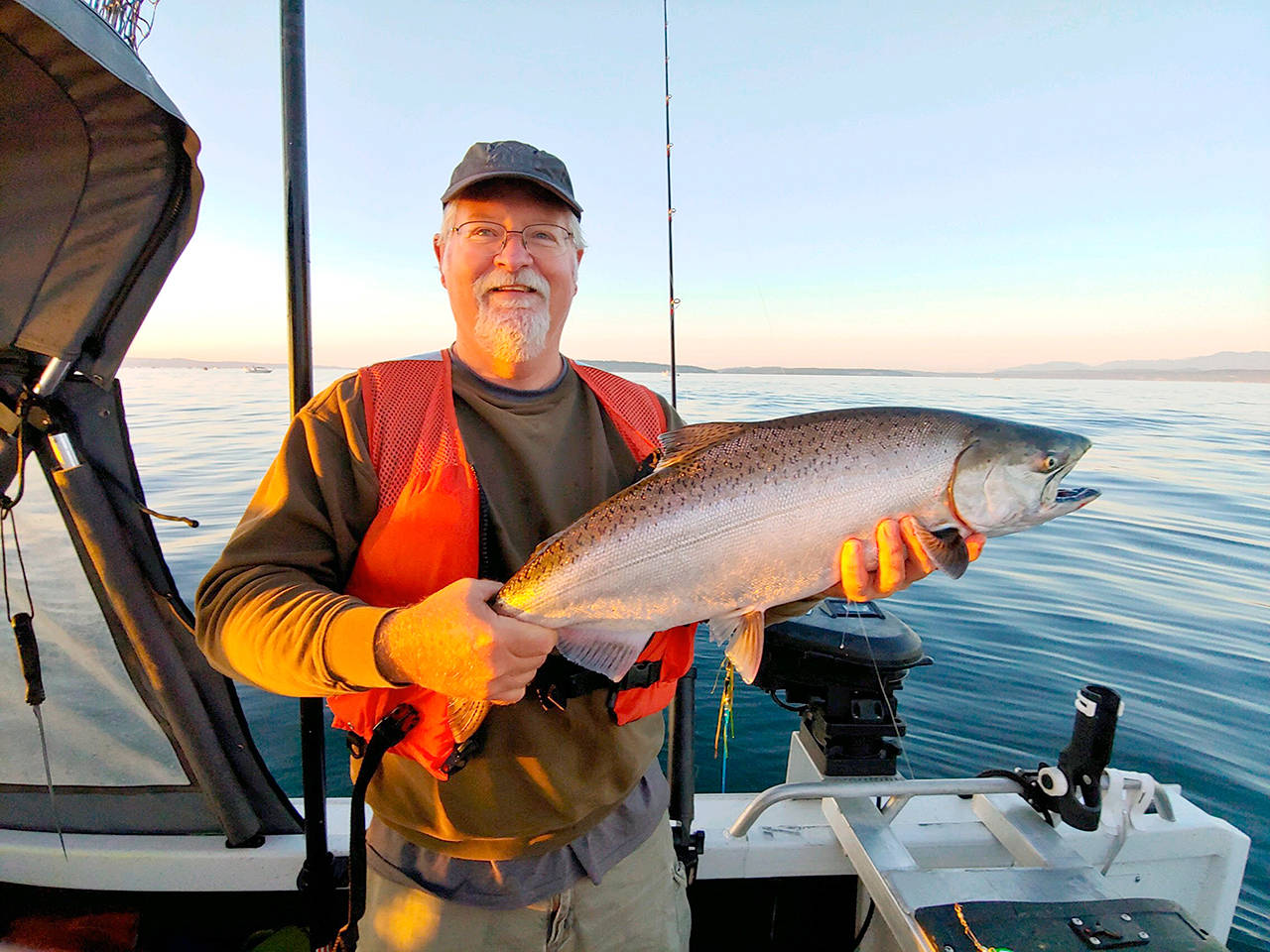It may well be a blink-and-you-miss-it type of fishery, but salmon season will open Friday in the waters off Marine Area 9 (Admiralty Inlet).
The neighboring San Juan Islands (Marine Area 7) bumped up against quota guidelines after a week’s fishing, according to the state Department of Fish and Wildlife.
With even more anglers set to hit the waters of Area 9 from across Puget Sound, fishing early and often may make the most sense for this popular season.
And Marine Area 9 is heavily influenced by tidal conditions as the western boundary of the fishery juts up against Point Wilson, where a swift rip current comes together as the Strait of Juan de Fuca connects with Puget Sound, forming Admiralty Inlet and its offshoot, Port Townsend Bay.
Midchannel masses
Midchannel Bank is the most popular fishing location in Marine Area 9, a 2½-mile stretch of marine shelf between Port Townsend and Marrowstone Island.
This is a prime spot for blackmouth chinook in winter, if the state ever decides to reopen that fishery. During the summer season, Midchannel is a route of passage for Puget Sound-bound chinook.
Traditionally, the summer kings move through Midchannel on the incoming tide and don’t pause like winter blackmouth, so the best king fishing occurs on the outgoing tide.
A lot of downrigger-equipped anglers swear by starting out on the eastern edges of the bank toward Marrowstone Island during the initial outgoing tide, then working back west toward Point Wilson later on.
The optimal time for downrigger anglers is about two hours before low tide along the bank.
Marine Area 9 has a two-salmon daily limit, only one of which may be a hatchery king 22 inches or longer. All chum, wild coho and wild kings must be released.
Beachcasting options
Quilcene’s Ward Norden walks anglers through three less-expensive fishing options for the beach-bound set.
“As you read this, you have probably gone out for fishing for salmon at least once and realize that salmon fishing is an expensive proposition with automobile gas at nearly $4 a gallon and marine gas even more,” Norden wrote in an email. “Take heart. There are more economical ways to keep the freezer full on the North Olympic Peninsula.
“It is beachcasting time for salmon again, and that will continue for the next two months with [an] enormous number of resident coho and a huge run of humpies [pinks] on its way home.”
Whidbey method
Casting jigs from the beach is the most popular method by the hundreds who line the shores of Whidbey Island.
“Rotator Jigs made in Sequim are by far the most popular, almost displacing the ever popular Buzz Bombs from Canada,” Norden said. “Another method recently becoming more popular is casting colorful 1/8- to 1/4-ounce crappie-style jigs a few feet under a large, sliding bobber. Pink and chartreuse are always good color choices.”
Bait
Norden said bait casting is the traditional method used by anglers to catch salmon at Marrowstone Point in Fort Flagler State Park.
“The most common way to cast herring is to hook the herring on a leader about 3 feet behind a ½- to 1½-ounce spin sinker, allowing the angler to gently cast the herring out quite a long distance,” Norden said. “Hopefully, those small Green Label herring preferred by beach casters will become more available as the season rolls on.”
Casting “hardware,” or medium-sized spinners and spoons, is a widely used method at Fort Worden State Park’s Point Wilson and in Hood Canal (Marine Area 12) at Salisbury County Park, which is located on the Kitsap side of the Hood Canal Bridge and near Dabob Bay near Quilcene in mid-August.
“For many years, the most popular hardware to throw have been Pixie Spoons with the pink center by Blue Fox as well as the 1/2-ounce spinners made by Blue Fox. My favorite homemade spinners have been brass bladed, but at times, nickel blades made the day,” Norden said.
“The tackle for this activity is simple. A 7- to 9-foot steelhead rod, a reel loaded with 12-pound test line, a few size-10 snap swivels and a spool of 10-pound leader material, plus 2/0 hooks, if using bait.”
And Norden said each location is best on certain tides, so plan a couple of trips to find out.
“I don’t want this to be too easy,” Norden said.
________
Sports reporter Michael Carman can be contacted at 360-406-0674 or mcarman@peninsuladailynews.com.

